Documentation
The demo of this template is currently running with joomla 3.9.10 / php 7.2
In the package, you have :
- This manual
- The template
- The responsive slideshow of this demo
- The module Google map of this demo
Introduction
I don't provide any quickstart install so your website will be all white at the beginning. Don't worry. Read this manual and follow the steps in the next paragraph "How to obtain the Home page of the demo ?"
To customize the appearance of your website, read carefully the paragraph "Module positions" and "Module class suffix".
And before launching your website, I recommend you to verify the result in all screen resolutions. It's simple : resize the window of your browser and look the difference. To adjust the result, you have some important options in the section "Responsive options in Template manager".
How to obtain the Home page of the demo ?
- I install the slideshow and publish it in the module position "image" (more details in the section "slideshow")
- I published the menu (position "menu" - see next paragraph "How to configure your menus")
- I make no change in Template manager
- I create 3 Custom HTML modules with the position "user_image1", "user_image2" and "user_image3". The top of these modules are above the slideshow.
- I publish the module "Latest news" and "Most Read" (in Joomla core) with the position "user7" and "user8" and with the Module class suffix "vertical-menu text-centered". I create another Custom HTML module with the position "user9" and the Module class suffix "text-centered".
-
Finally, I edit my menu item "Home" and choose the type "category blog". In the section "Blog layout", I enter these settings to obtain my articles in 2 columns :
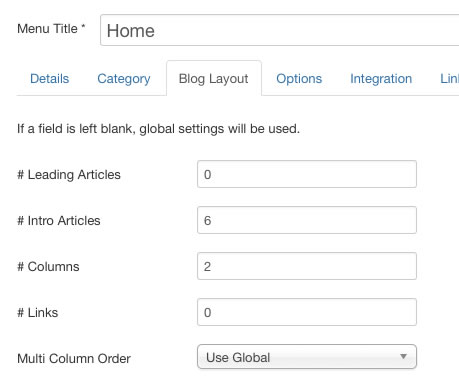
And ... how to obtain the same article : an image with an hover effect and the text below ?
I explain that in this page. Example, this is the code of my "Article one" (you must disable the wysiwyg editor) :
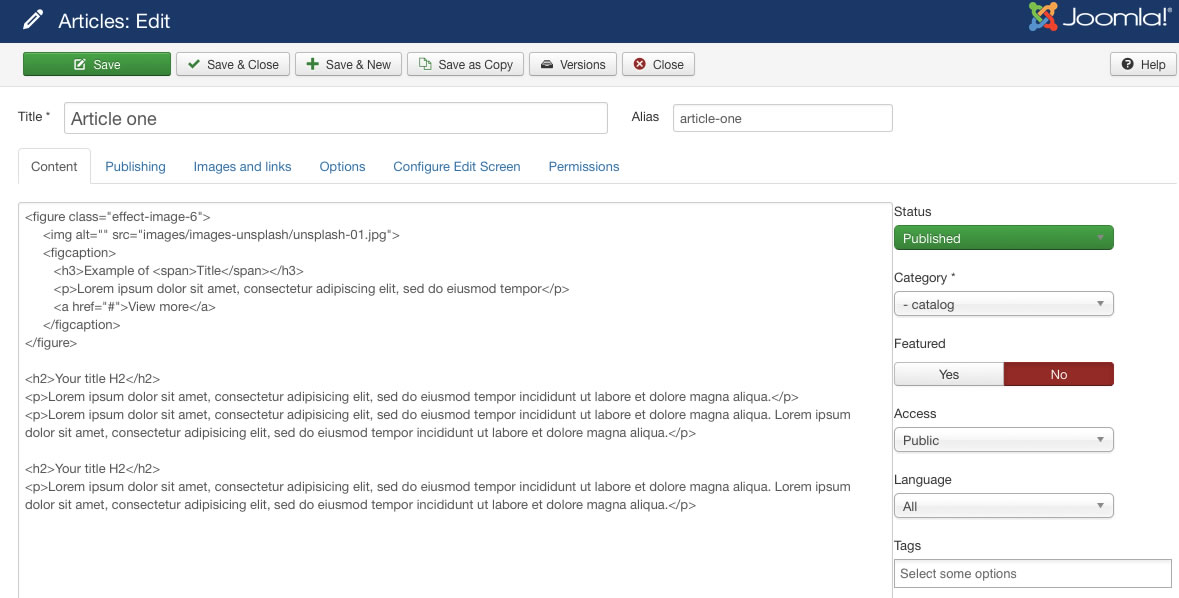
Template Settings
You can access to template manager with the top menu : "Extensions --> Template Manager --> joomspirit_119 "
With "joomspirit_119" template, you can set a lot of parameters. All the details here.
Module Positions
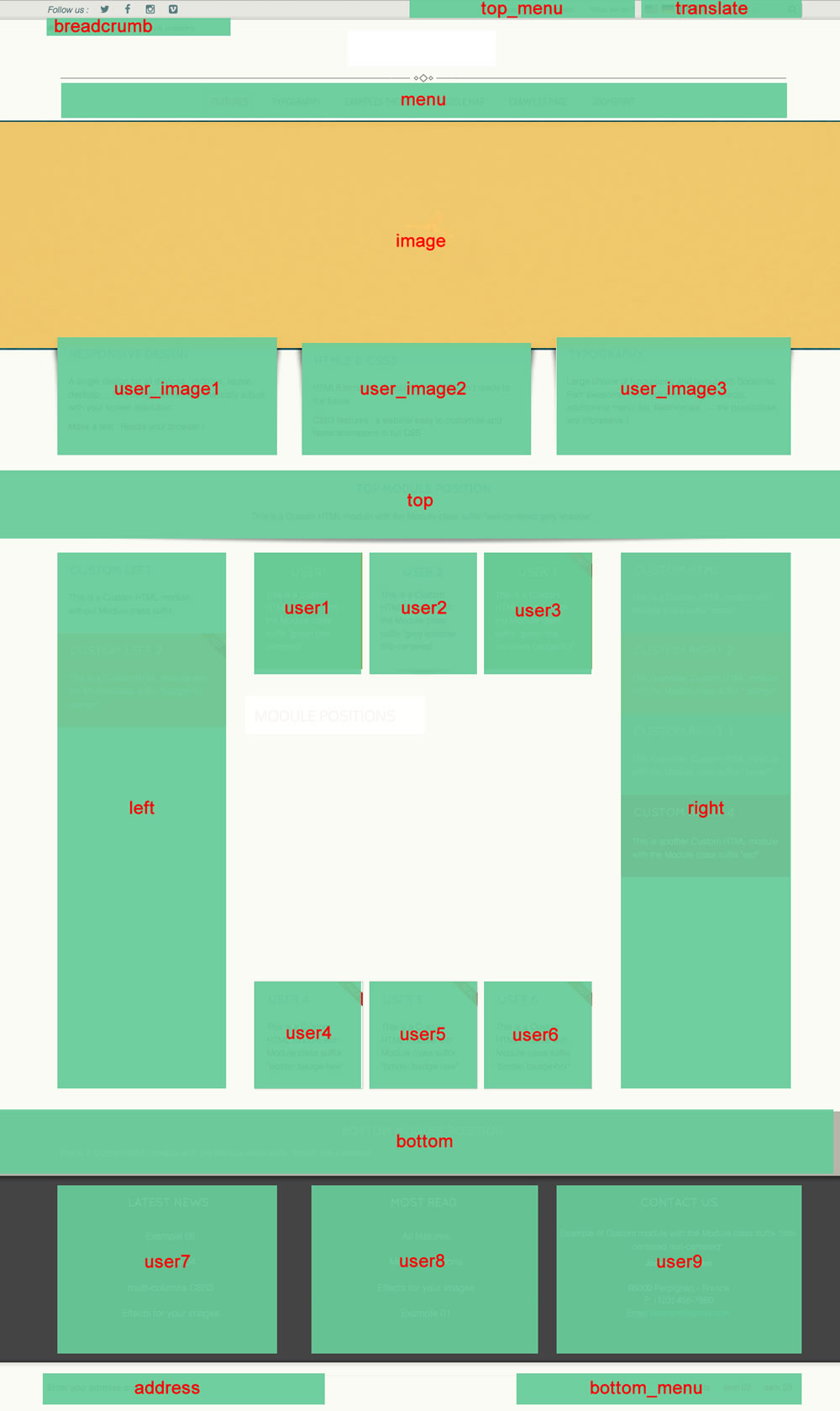
Example for the "address" position : go to the module manager and create a new module with the option "custom html". Write your address or/and copyright and choose the position "address".
How to display your logo ?
With this template, you choose if you want insert your logo image or just write your site name (by default).
Go to the Template manager (section "Logo") and choose/upload your image. If no image is selected, the text of website title will be displayed.
How to configure your menus ?
The dropdown menu (main menu):
To use it, you must select your main menu in module manager and enter these settings :
- position : "menu"
- Always show sub-menu items : "yes"
- No Module class suffix
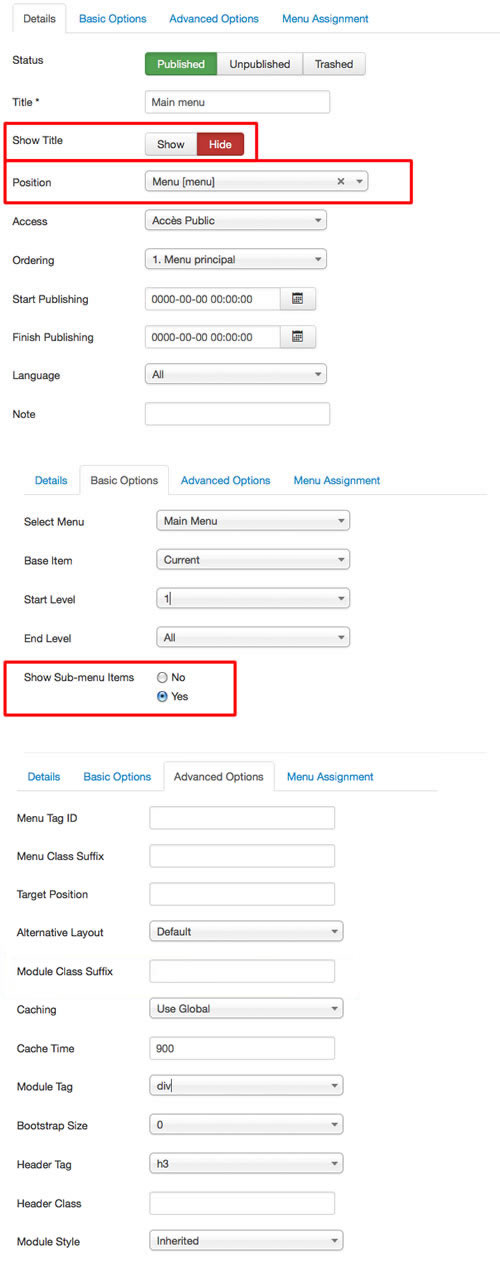
Note for mobile devices : the type of all parent items must be "external url" (don't use the type "text-separator"). Choose the type "external url" and enter the character # in the url field :

Additionnal horizontal and vertical menu
If you want display a second menu in the content part, you can choose almost 22 differents possibilities.
Click here to read all the details in the demo page with some examples.
Note : All these menus work without javascript code (pure CSS : no risk of conflict with another extension !).
How to display the slideshow of the demo ?
You can download this responsive slideshow on my website.
Install the module and edit it :
- choose the module position "image".
- I kept almost default options. Except these ones :
- In "General settings", I enable the option Kenburn effect.
- In "slideshow theme", I choose "shadow on the top of each image --> Curve shadow". Same thing for "shadow on the bottom of each image".
- In "Options for your captions", I choose "Text under the slideshow --> Never". I choose that because the modules "users_images" will be above this text if I enable this option.
How to obtain the static image in the others pages ?
I use always the same module. I duplicate it in Module manager and choose some specific pages with the option Menu assignment.
I disable the kenburn effect and choose only 1 image without any text. The main difference is the height. In the section "Height of your slideshow", I choose "Height fixed in pixels = 360 pixels" for Desktop and Tablets. I choose "height fluid" for Phones.
What is the size of my images ?
I use a size of 1200 x 800 pixels and I compressed each image with a ratio of 65% in JPEG optimizer.
Responsive options in Template manager
In this section you can disable the Responsive feature but I don't recommend you that.
Most important, you can choose when the Left and Right columns and the Users modules position will be displayed inline.
Typography
You can find a lot of possibilities to create a beautiful website. I explain all that in the demo :
- Click here to see the General typography : titles, alignment, drop cap, inset, background color, image, ...
- Click here to display an image with some text on the side and the background color of your choice.
- Click here to see the Effects for your images.
- Click here to see the Column layouts.
- Click here to see the Multi columns with CSS3.
- Click here to see the ordered and unordered lists.
- Click here to see the tables.
- Click here to see the Font Awesome.
Font Awesome allows you to add vector icons from a library of over 360 to any part of your joomla template including Articles, Article titles, Menu items and Module titles. - Click here to see the testimonials.
Module class suffix :
Options for displaying your modules in the "left", "right", "top", "bottom" or "user" positions :
- Without module class suffix : No styling for your list and the links.
- With the module class suffix " horizontal-menu" or "vertical-menu" : to display an additionnal menu.
- With the module class suffix " no-margin" : you remove the margin inside your module. It's useful if you want displayed an image in a Custom HTML module.
- With the module class suffix " border" : you add a border around your module.
- With the module class suffix " radius" : you add a rounded corner.
- With the module class suffix " shadow" : you add a shadow under the module (don't work with Black theme)
- With the module class suffix "white" : you add a white background
- With the module class suffix "black" : you add a black background
- With the module class suffix "grey" : you add a grey background (this color depend of the color theme)
- With the module class suffix "orange" : you add an orange background
- With the module class suffix "violet" : you add an violet background
- With the module class suffix "red" : you add a red background
- With the module class suffix "blue" : you add a blue background
- With the module class suffix "green" : you add a green background
- With the module class suffix "turquoise" : you add a turquoise background
- With the module class suffix "brown" : you add a brown background
- With the Module class suffix "title-centered" : the module title is centered with a line on each side (you can't put "title-band" in the same module).
- With the Module class suffix "text-centered" : the text is centered.
- With the Module class suffix "title-band" : display a dark background under the module title (you can't put "title-centered" in the same module)
- With the module class suffix "badge-new", "badge-free", "badge-hot", "badge-top", "badge-news", "badge-gift" : to display a badge in the upper right corner of your module.
Note : If you choose a background color , the color of module title is always white.
Note : You can enter several Module class suffix. Example "shadow green badge-top title-centered"
Extra Module class suffix for mobiles
For faster mobile-friendly development, use these utility classes for showing and hiding content by device. More details here
How to display the Google map like on the demo ?
I wanted a module very easy to use. So I choose to display the standard Google map and you can create it in less than a minute !
How to publish your google map ?
- Install the module "mod_google_map.zip" (you can find it in the package). Edit this module and choose the position "image", and don't forget to set the Menu assignement :
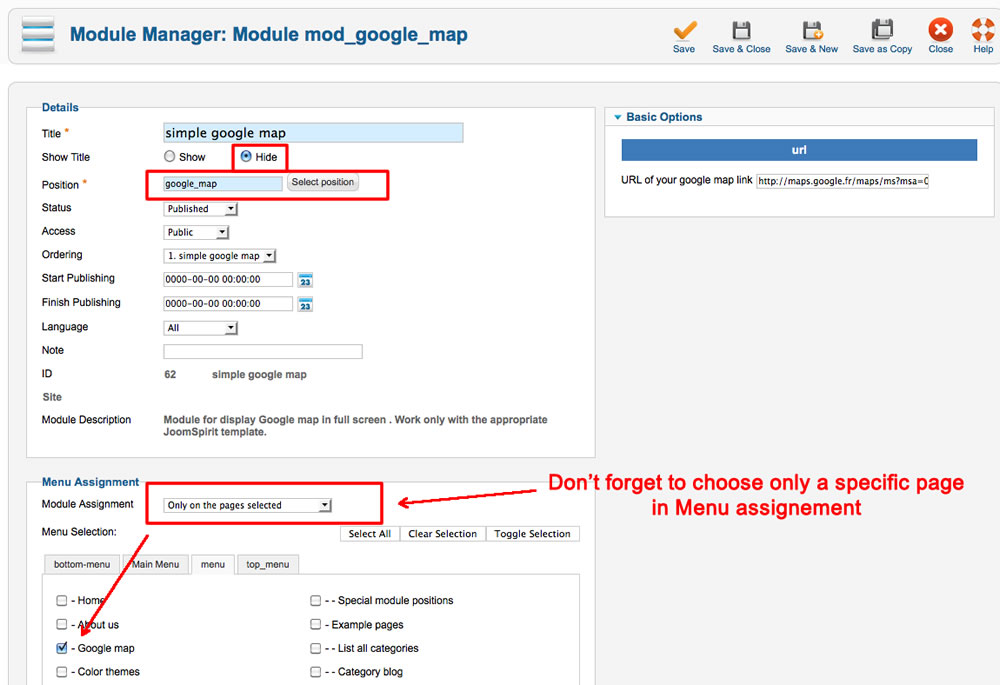
How to obtain the URL of my Google map ?
In the "simple Google map" you must enter the URL of your map and only that.
Go to the Google maps
Choose your location and click on the "parameters" icon :
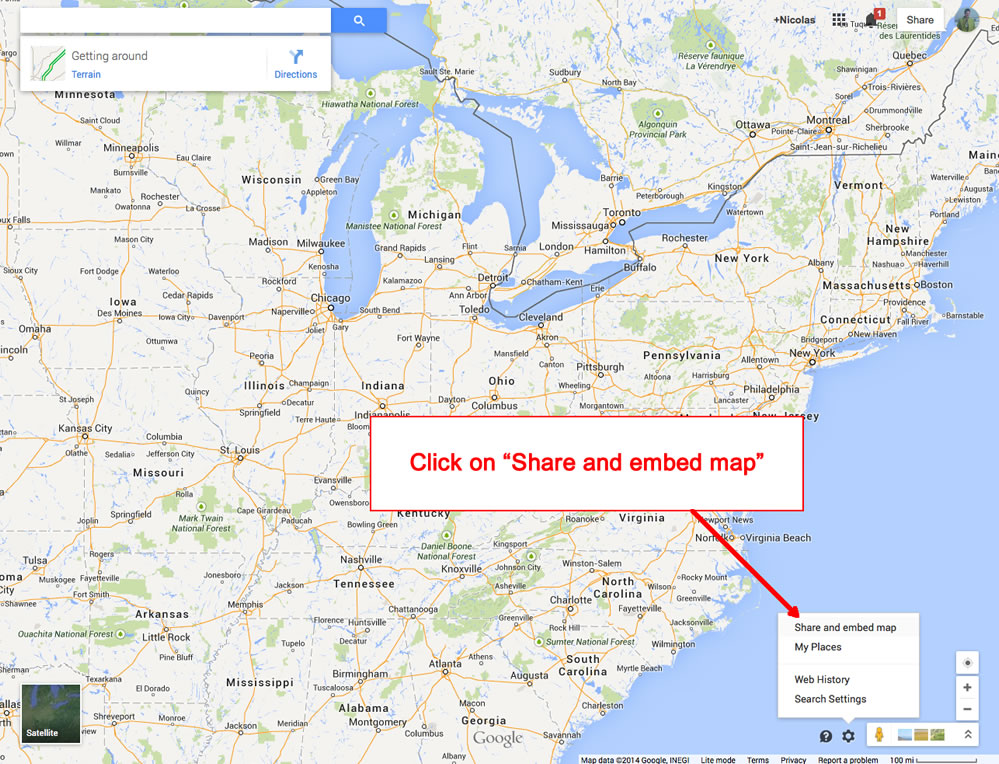
In the new window, copy the URL and paste it on your Joomla module :
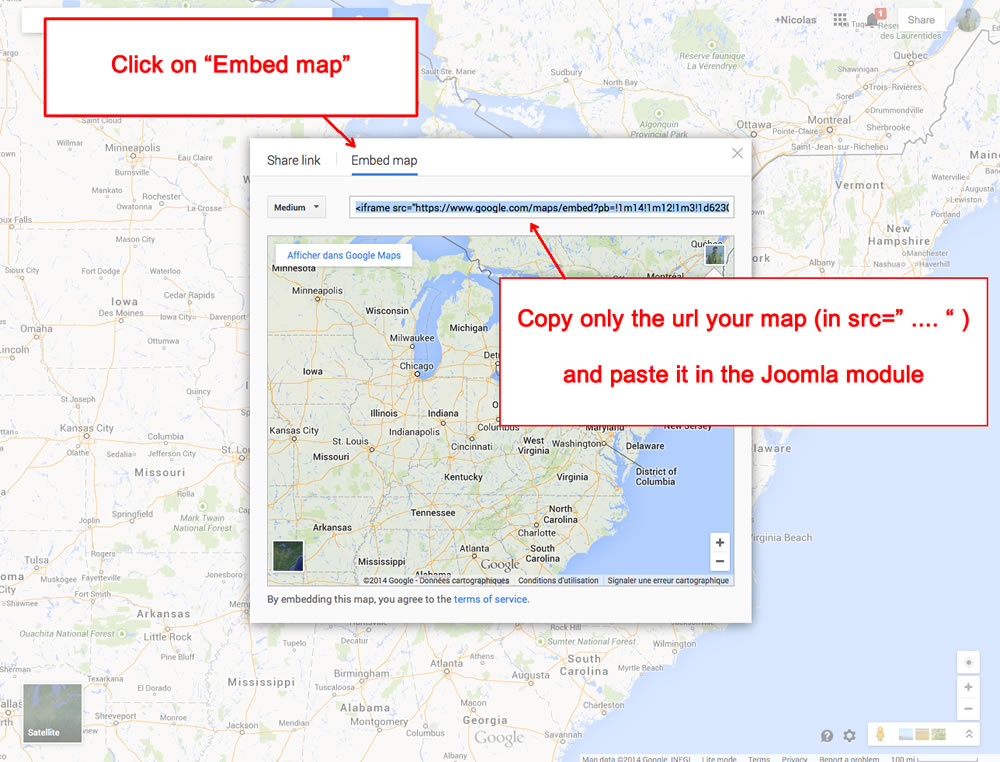
note : you must create a google account to add a marker
Bootstrap
The template is build with Bootstrap 3.1.1.
Tips and customization
Tip : How to display an article title above the slideshow like here ?
To obtain that, I edit the menu item of this page and I add the page class " title-90" in the section "Page display" :
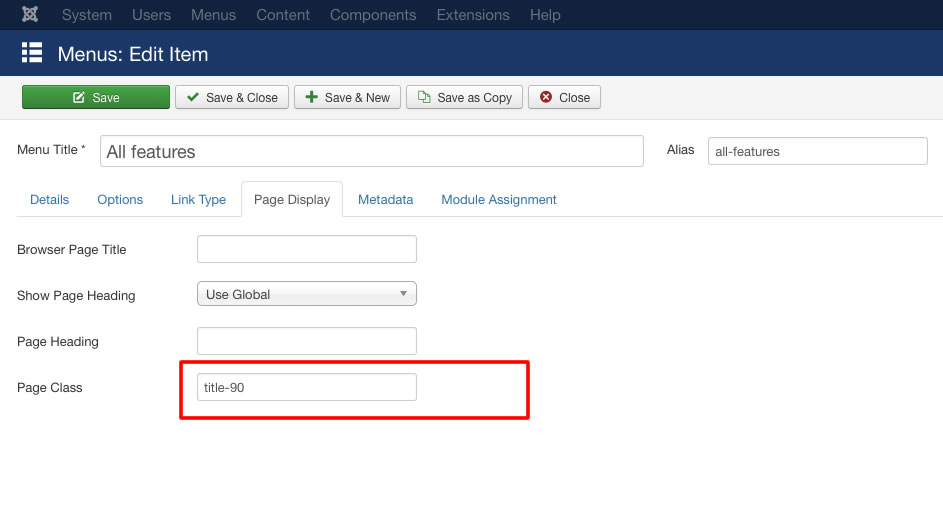
With this code the title will go up 90 pixels. It's enough with the size of my title but it's perhaps not a good distance for you. So I include a lot of possibilities ; you can add " title-60", " title-70", " title-80", ... until " title-150".
You can choose a specific font size, color and shadow for this type of title in Template manager (section "Content box").
Restrictions
This option work fine if none module is published between your article and the slideshow. Per example, you mustn't use it if you use any "users_image" module or "top" position.
That work with component page too (single contact, category blog, ...) but when you edit your menu item, you must display the "page heading" in the section "page display" and you must add an empty space before the Page class.
Note : This option is disable when the screen width is less than 600 pixels.
Tip : don't forget the option "Menu assignement"
This option is available for all modules and templates. It's a very powerful option and I recommend you to use it !
With this option, you can published a module or a template only on selected page(s). And you can duplicate any module or template.
So if you want modify the settings of your template only on few pages, it's possible and very easy with this option.
Tips for the user modules
In the template manager, you can choose the width for user1 and user2. The width of user3 automatically adjusts.
So, if you publish only one user module : publish user3 (for a width of 100%).
If you publish two users module : publish user1 and user3, or user2 and user3.
Search field
In the template manager, you can choose to display the Search field in the header (section "General").
How to add a new Google font in Template manager ?
- Go to the Google font page. Choose your font and click on the button "quick use"
- Paste the code below and copy it in Template manager.
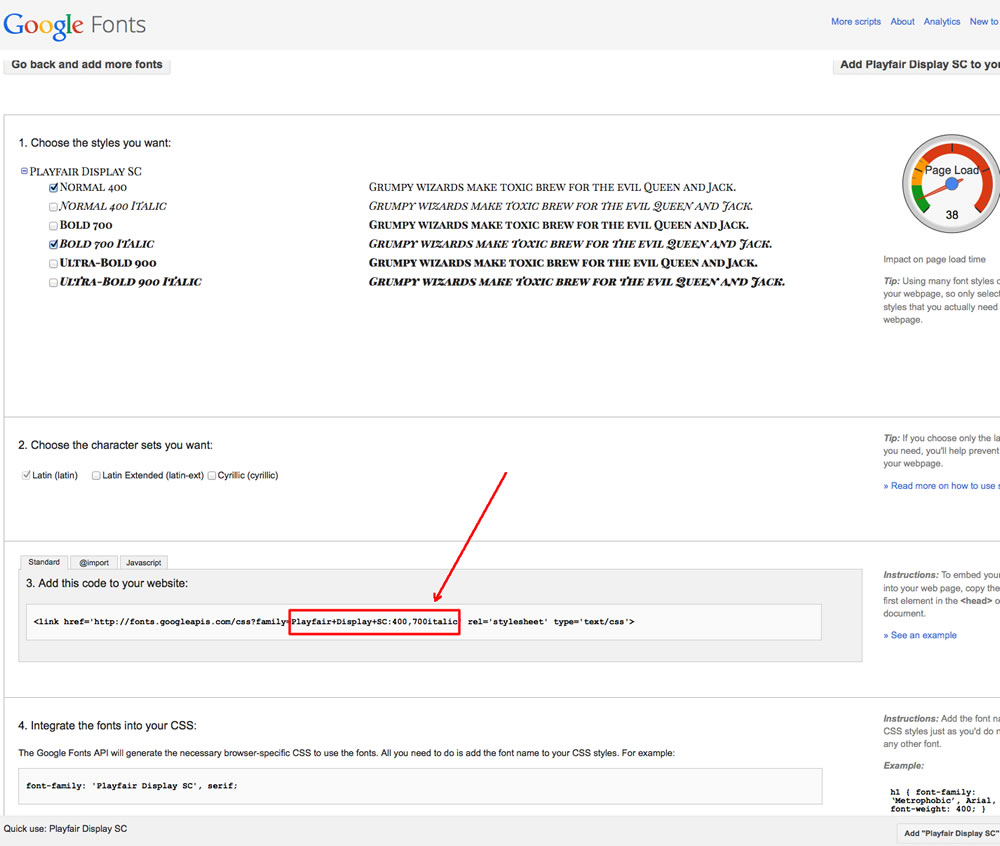
In this example the code is : Playfair+Display+SC:400,700italic
How to add an icon before a menu item or before an article title ?
Click here to see the details of Font Awesome.
Font Awesome allows you to add vector icons from a library of over 360 to any part of your joomla template including Articles, Article titles, Menu items and Module titles.
Tips for your images
By default, a border is added around all your images in your articles. You can disable this option in the section "General" of Template manager.
If you want add this border only on specific images, disable this option and add the class "js-border" in the HTML code of your image.
If you want remove this border only on specific images, enable this option and add the class "no-style" in the HTML code of your image.
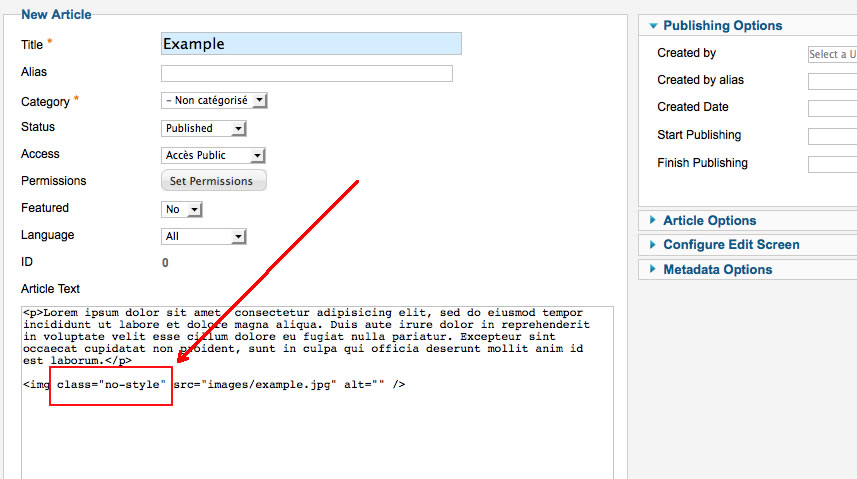
Customize the template
You can put all your custom code in the file "css/custom.css".
Photos credits
In this demo I use some photos with the licence Creative commons paternity. I resized the photos to obtain a size of 800 x 1000 pixels. These are the photographers :
Link
To continue to offer affordable prices, I decided to display a soft Copyright in the bottom right corner to increase awareness of the site JoomSpirit.
This does not affect your site, but if you want remove this link, you must edit the file "index.php" and delete this code line 673 and 740 :
<?php echo $js ; ?>